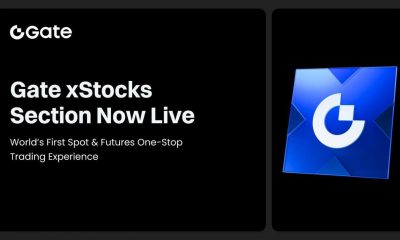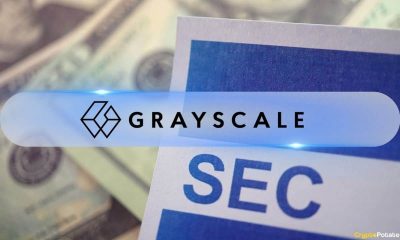Uncategorized
My wife and I are in our 50s with $300,000 in a 401(k) and $700,000 in a pension. Will we have enough to ‘live a simple life’ in retirement?

I’m 53 years old, a registered nurse and planning to retire at 58. I am married, my wife is two years older than I am and she plans to retire at 62. We have a good marriage and friendship. We have three grown up kids. I only have $300,000 in my 401(k), and not on aggressive mode.
My work at a prestigious hospital will give me more or less a $700,000 pension from 26 years in service. I plan to get Social Security at age 62. When I was younger in my 20s and 40s, I never had planned on retiring, but sickness got in the way (my knee is giving me problems that I’m unable to walk for longer hours. I had two minor surgeries and it didn’t fix it).
In my situation, I think it’s doable. I plan to live a simple life. I plan to add an extra $1,000-$2,000 yearly to my mortgage.
Do you think my money will be sufficient? I’m so embarrassed that I did not prepare well enough. I have no savings at all or cash on hand. I lived paycheck to paycheck because my wife and I were careless with our expenses. We don’t have debt. I have six cars and I’m planning to limit it to two cars in the future. And sometimes it bugs me that 5-6 years until retirement is so close and I’m still young. I started working when I was 22 years old.
What is the best plan for the coming years? In the next 5-6 years, I don’t want to open my eyes, because I think I’m not ready for the next chapter of my life. Thank you.
Mr. Wonderman
Dear Mr. Wonderman,
First of all, you’re not alone. Many Americans are surprised to see they have not prepared as well as they had hoped for retirement when they finally get ready to call it quits. And having a medical condition certainly doesn’t help the situation.
The good news is you have time, especially if you’re both planning to work another five to seven years. And you also have a healthy sized pension, which is something many Americans these days cannot rely on. So you’re not as bad off as you may think.
The bad news is, you’ll probably have to make some realistic assumptions of what your retirement will look like. If you’ve lived primarily paycheck to paycheck in your working years, that may continue to feel the case in your retirement.
“If his assets are the entirety of the pot of money to draw from, they will probably be retiring on less income than they are currently making,” said Brent Ford, partner and investment adviser representative at Benefit Wealth Partners.
Think very carefully about the sort of income you’ll be receiving until you can begin claiming Social Security at age 62. If you retire and your wife is still working, you may want to try and rely solely on her income as opposed to dipping into your 401(k), so that the money in there can continue to grow over time. It is hard to tell how long anyone will live, but you should plan to live a couple of more decades at least, and you’ll need all the savings you have to last that time frame.
For most people, filling in that income stream gap comes down to working part time, Ford said. Is that possible for you? Or is there another hobby or passion you have that you could potentially make money from while you’re waiting to claim Social Security?
Whether you’ll be able to live a comfortable and simple lifestyle in your retirement depends largely on how you define that. Assess how much income you’re bringing in now and compare it to what you will be getting from your account withdrawals and Social Security, when the time comes. Also make realistic assumptions for how much everything will cost in your retirement – your housing and utility bills, groceries, healthcare, taxes, and some of the fun stuff. You have worked all these years, you and your wife deserve to enjoy this next chapter.
Here’s one way to do that: First, try using an annual withdrawal rate of 3% for your estimates. In this scenario, if you were to have $1 million in retirement assets, you’d be withdrawing about $30,000 a year, or $2,500 a month. Then, see how much you can expect to get from Social Security. You can do this by making an account on the Social Security Administration’s website. You’ll be able to view your work and earnings history (which is important – your benefits are based on that and you want it to be accurate), and you’ll also get an estimate for your benefits at various claiming ages.
Add those numbers together and see what you get. How does that compare to the amount of money you’re bringing in now, and will it cover the bills and then some for the future?
One of the advantages in your situation is that you both seem to be living within your means, even if you’re not happy with how you’ve saved, Ford said. “We should be attempting to meet their preretirement net income, or the amount of money that is getting deposited into the bank every two weeks,” he said. “If we can achieve the same living wages on a month-to-month basis, it’s logical that they are able to pay their required debt and continue to achieve close to their standard of living.”
He has a few other suggestions, such as not putting extra payments toward the house, especially if you have a low interest rate. If you’re able to pay the mortgage, which it appears you are, just keep doing what you’re doing, and stash away any excess money for your future. The equity in your house is important, but that money becomes illiquid when you put it toward your mortgage, and you may want to focus on assets you can easily tap into. One crucial account you’ll need, for now and in retirement, is an emergency fund.
Also see: I’m retired, my wife isn’t – how should we pay off our $60,000 mortgage before she retires?
As for your cars, now may be a good time to sell. The current auto economy is a seller’s market, Ford said, and you may be able to sell them for a higher price now than in a few years when interest rates jump and supply chain issues are less of a problem.
Also, consider reviewing your 401(k) asset allocation. You said you’re not aggressively invested, and there may be a million reasons why, but this is an “awkward” time to be too conservative, Ford said. With interest rates historically low, bond values are not too hot, which means if you’re heavily invested in bonds, they’re not working too well for you. Inflation doesn’t help either, because as your values are dropping so is your spending power. If you’ve tuned into the news at all, you’ll likely see that the stock market has been hit hard lately, what with inflation and the war between Ukraine and Russia, but you may want to find a financial adviser who can help you make sense of the best investment strategy, so that your money is really working for you.
I want to talk a little bit about your spending concerns. Being aware of your spending habits and how it affects your savings and monthly budget is actually a very good thing, even if you’re not very pleased with yourself at the moment. And this is something that can be course-corrected without completely depriving yourself of the joys in life.
Check out MarketWatch’s column “Retirement Hacks” for actionable pieces of advice for your own retirement savings journey
The key is not to go too fast in trying to change your ways, said Larry Luxenberg, a certified financial planner and principal with Lexington Avenue Capital Management. “Trying to go too big all at once is a recipe for failure,” he said.
Money is a very personal topic, and everyone approaches it differently based on how they view it, which may be the result of how they were raised or what they saw happen to their parents, their grandparents or their peers during major financial events (ie. the 2008 housing crisis). Savers may always feel a reluctance to spend and spenders might find trouble fighting the desire to splurge, but small, meaningful changes are possible.
To get a better idea of just how good or bad your spending is, try tracking it. You can do this by writing down everything you spent on a pad or in a spreadsheet, or using an app like Mint that categorizes your spending for you. Maybe do it for a month or two and see what you find. Some people print out their credit card and debit statements and use a highlighter to pore over their spending.
“It’s important to approach this process from a place of curiosity, not judgment,” said Laura Lee Thompson, a certified financial planner at GWN Securities. “Doing this helps to answer the questions: Does the way you spend your money align with your values? Followed by, is there anything that can be eliminated – or can you find a less expensive way to get it?”
You might find that your cable or cellphone bills would be less expensive with another provider, or that you’ve been paying for a magazine subscription you haven’t looked at in years. “The process can be empowering as it helps the retiree become more intentional and cognizant of their expenses,” Thompson said.
Good luck!
Readers: Do you have suggestions for this reader? Add them in the comments below.
Have a question about your own retirement savings? Email us at HelpMeRetire@marketwatch.com
Uncategorized
BofA Securities maintains Amazon.com at ‘buy’ with a price target of $154.00
Uncategorized
Six people in critical condition, one still missing after Paris blast – prosecutor

5/5
© Reuters. French firefighters and rescue forces work after several buildings on fire following a gas explosion in the fifth arrondissement of Paris, France, June 21, 2023. REUTERS/Gonzalo Fuentes
2/5
PARIS (Reuters) – Six people remained in a critical condition and one person was believed still missing on Thursday, one day after a blast ripped through a street near Paris’ historic Latin Quarter, the city’s public prosecution office said. “These figures may still change,” prosecutor Maylis De Roeck told Reuters in a text message, adding that around 50 people had been injured in the blast, which set buildings ablaze and caused the front of one to collapse onto the street. Of two people initially believed missing, one has been found in hospital and is being taken care of, the prosecutor said, adding: “Searches are ongoing to find the second person.” Authorities have not yet said what caused the explosion, which witnesses said had followed a strong smell of gas at the site. The explosion led to scenes of chaos and destruction in the historic Rue Saint Jacques, which runs from the Notre-Dame de Paris Cathedral to the Sorbonne University, just as people were heading home from work. It also destroyed the facade of a building housing the Paris American Academy design school popular with foreign students. Florence Berthout, mayor of the Paris district where the blast occurred, said 12 students who should have been in the academy’s classrooms at the time had fortunately gone to visit an exhibition with their teacher.
“Otherwise the (death toll) could have been absolutely horrific,” Berthout told BFM TV. She said three children who had been passing by at the time were among the injured, although their lives were not in danger.
Uncategorized
4 big analyst cuts: Alcoa & DigitalOcean shares drop on downgrades

© Reuters.
Here is your Pro Recap of the biggest analyst cuts you may have missed since yesterday: downgrades at Alcoa, DigitalOcean, Teleflex, and Xcel Energy.InvestingPro subscribers got this news in rapid fire. Never be left in the dust again.Alcoa stock drops on Morgan Stanley downgrade Alcoa (NYSE:) shares fell more than 3% pre-market today after Morgan Stanley downgraded the company to Underweight from Equalweight and cut its price target to $33.00 from $43.00, as reported in real time on InvestingPro.The firm sees a significant decline in consensus estimates, and as negative earnings revisions materialize, it believes the stock will face downward pressure and underperform.The analyst’s estimates for EBITDA in Q2, 2023, and 2024 are substantially lower than the consensus. The stock is currently trading above its historical average. The firm said its downward revisions in earnings estimates and price target are attributed to the company’s high operating leverage to aluminum prices.DigitalOcean stock plunges on downgradePiper Sandler downgraded DigitalOcean (NYSE:) to Underweight from Neutral with a price target of $35.00. As a result, shares plunged more than 5% pre-market today.The company reported its last month, with revenue beating the consensus estimate, while EPS coming in worse than expected. Furthermore, the company provided a strong outlook, which was above the Street estimates.2 more downgradesTeleflex (NYSE:) shares fell more than 3% yesterday after Needham downgraded the company to Hold from Buy, noting that UroLift expectations may still be too high.According to Needham, their checks indicate that urologists are reducing their use of UroLift due to its retreatment rates, reimbursement cuts, and increasing use of competing procedures. This is also supported by their Google Trends data analysis, which indicates decreasing search interest in UroLift.BMO Capital downgraded Xcel Energy (NASDAQ:) to Market Perform from Outperform and cut its price target to $64.00 from $69.00 to reflect the lower-than-expected terms of the company’s regulatory settlement in Colorado.Amid whipsaw markets and a slew of critical headlines, seize on the right timing to protect your profits: Always be the first to know with InvestingPro.Start your free 7-day trial now.

 Forex3 years ago
Forex3 years agoForex Today: the dollar is gaining strength amid gloomy sentiment at the start of the Fed’s week

 Forex3 years ago
Forex3 years agoUnbiased review of Pocket Option broker

 Forex3 years ago
Forex3 years agoDollar to pound sterling exchange rate today: Pound plummeted to its lowest since 1985

 Forex3 years ago
Forex3 years agoHow is the Australian dollar doing today?

 Cryptocurrency3 years ago
Cryptocurrency3 years agoWhat happened in the crypto market – current events today

 World3 years ago
World3 years agoWhy are modern video games an art form?

 Commodities3 years ago
Commodities3 years agoCopper continues to fall in price on expectations of lower demand in China

 Economy3 years ago
Economy3 years agoCrude oil tankers double in price due to EU anti-Russian sanctions






























